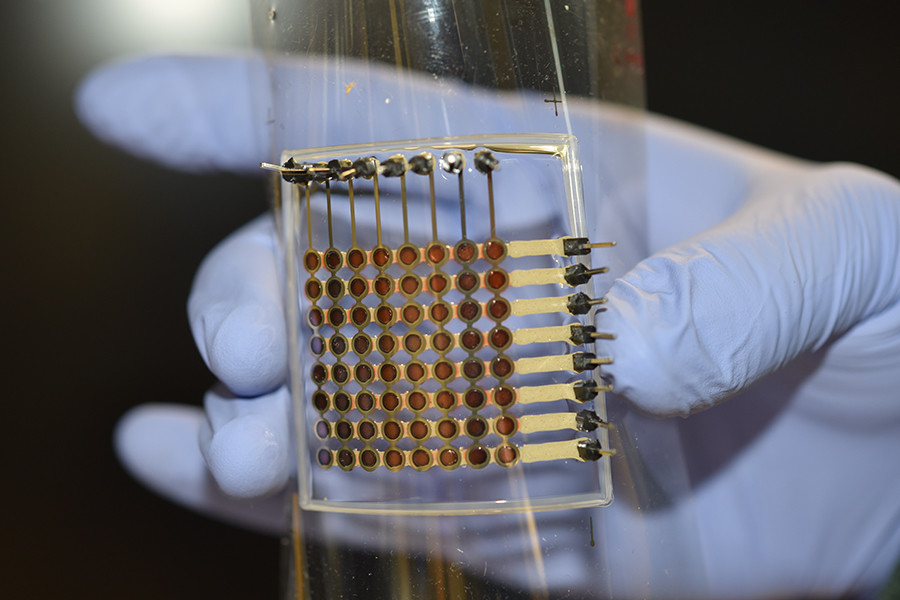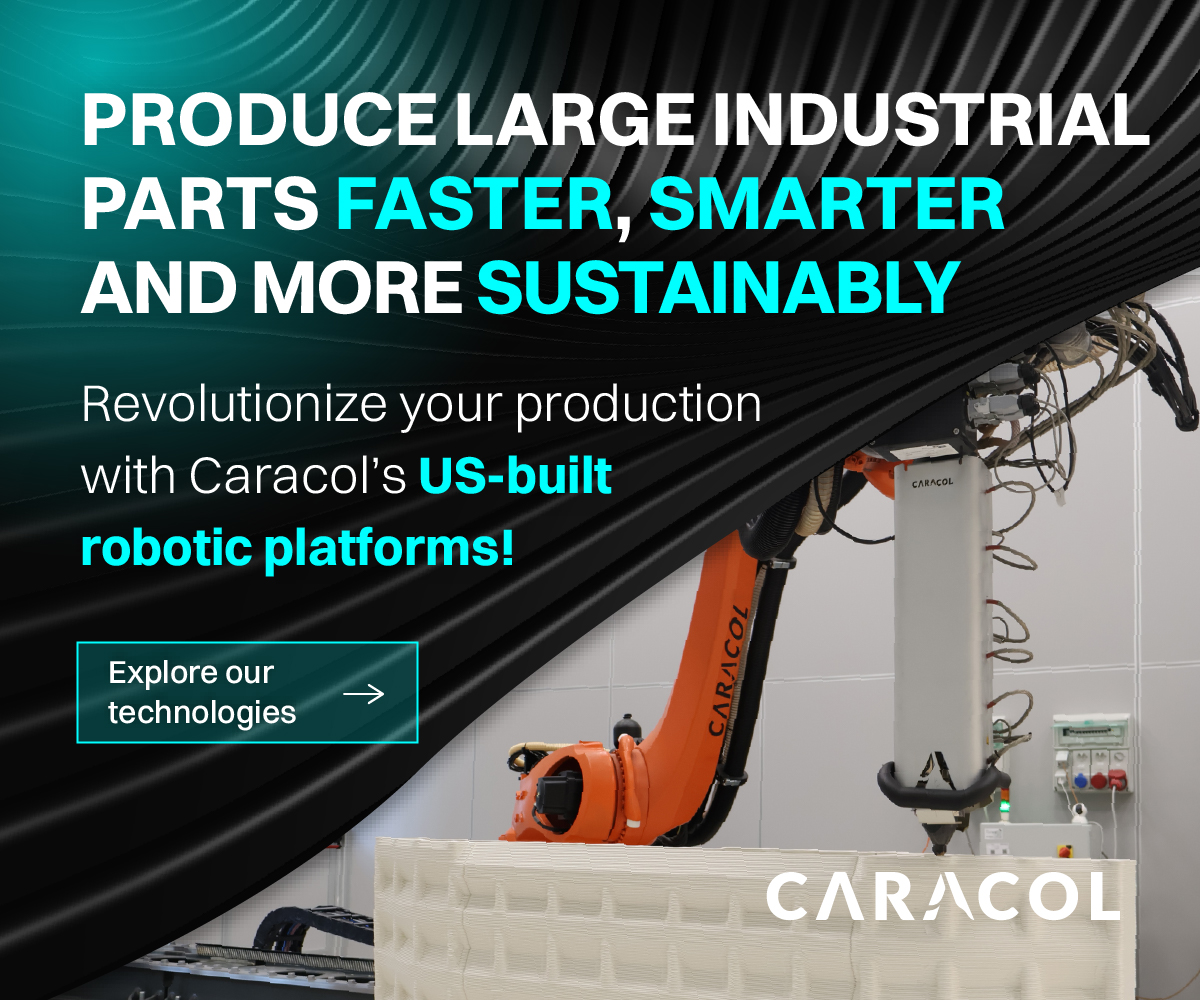In order to progress additive manufacturing (AM) to the point of directly producing functional end goods—think smartphones, tablets, sensors and more—the 3D printing of electronics is going to have to continue advancing. And it is, as evidenced by a recent study from researchers at the University of Minnesota Twin Cities, who have developed a method for 3D printing a flexible, organic light-emitting diode (OLED) display. The team believes that this process could one day make it possible for ordinary consumers to 3D print these low-cost electronics at home.
OLEDs are the bases for display in most modern TVs and smartphones, relied on for their light weight, efficient electricity usage, thin and flexible nature, as well as the wide viewing angle and high contrast ratio. However, as the senior author of the study, University of Minnesota professor Michael McAlpine, pointed out, they are made in expensive facilities:
“OLED displays are usually produced in big, expensive, ultra-clean fabrication facilities. We wanted to see if we could basically condense all of that down and print an OLED display on our table-top 3D printer, which was custom built and costs about the same as a Tesla Model S.”
Detailed in a paper published in Science Advances, the research features a customized 3D printer made up of an AGS1000 direct-drive gantry from Aerotech outfitted with Ultimus V pressure dispensers and printing nozzles from Nordson EFD. The printing process begins with PET films mounted with electrical connection pins, all wrapped with silicone (PDMS). Silver interconnects were printed with silver nanoparticle ink using the Nordson pneumatic dispensing system. This is followed by a layer of conductive polymer made of poly(3,4-ethylenedioxythiophene) polystyrene sulfonate (PEDOT:PSS), making up the anode.

“Schematic of the fully 3D printed OLED display and printing methodology.(A) Exploded view of the OLED display demonstrating its layer-by-layer structure. Layers 1 through 6 are 3D-printed components. The OLED display was printed on PET films that were mounted with electrical connection pins and encapsulated with PDMS. (B) Schematic demonstrating the methods for printing and reconfiguring each component of the OLED display. (C) Energy band diagram of the OLED showing the transport and recombination of the charge carriers under a constant or pulsed external voltage. From left to right, the four materials are AgNPs, PEDOT:PSS, MDMO-PPV, and EGaIn. The inset image displays the molecular structure of MDMO-PPV. hv, absorbed photons. (D) Electroluminescence (EL) spectrum of the 3D-printed OLED. a.u., arbitrary units.” Image courtesy of Science Advances.
The deposition process is then interrupted with a spray printing procedure, in which the electroluminescent polymer MDMO-PPV, necessary for light emission, was deposited in a thin layer. To perform this, a 781Mini spray valve from Nordson was integrated into the same printer as the pneumatic deposition head. The choice for a spraying mechanism was arrived at due to the fact that using pneumatic deposition for this material had proved problematic in the past, as this light emission layer didn’t achieve sufficient uniformity. The authors note:
“Overall, the lack of uniformity in the active layers caused large variations in light emission across the active regions within the same batch of devices, signifying the need for alternatives to extrusion printing for the fabrication of large-scale display devices. Therefore, we exploited a spray printing method to deposit MDMO-PPV to improve the uniformity of the active layers.”
The printer then swaps back to the pneumatic head and performs the rest of the job, as shown in the video above. This includes a silicone-based insulation layer, eutectic gallium-indium (EGaIn) to form the cathode, and silver paste to act as the terminal contact layer. Then, the whole device was encapsulated with a 3D printed silicone mold, resulting in a flexible and transparent OLED display made up of 64 pixels and measuring about 1.5 inches on each side.

The fully 3D printed flexible organic light-emitting diode (OLED) display prototype is about 1.5 inches on each side and has 64 pixels. Every pixel works and displays light. The 3D printed display is also flexible, which could make it useful for a wide variety of applications, such as foldable smartphone displays. Credit: McAlpine Group, University of Minnesota
“I thought I would get something, but maybe not a fully working display. But then it turns out all the pixels were working, and I can display the text I designed. My first reaction was ‘It is real!’ I was not able to sleep, the whole night,” said first author Ruitao Su. Su added, “The device exhibited a relatively stable emission over the 2,000 bending cycles, suggesting that fully 3D printed OLEDs can potentially be used for important applications in soft electronics and wearable devices,” Su said.
Now that the team has 3D printed this simple device, the goal is to produce something with higher resolution and brightness. They will also look into integrating transistors and capacitors into the production of the device. McAlpine hinted at the possibility of actually producing such displays at home:
“The nice part about our research is that the manufacturing is all built in, so we’re not talking 20 years out with some ‘pie in the sky’ vision. This is something that we actually manufactured in the lab, and it is not hard to imagine that you could translate this to printing all kinds of displays ourselves at home or on the go within just a few years, on a small portable printer.”
The advantages of 3D printing such a display at home is not explained, but one can imagine some sort of all-in-one 3D printer, not unlike what Inkbit is working on, that could produce any and all electronic devices. That way, consumers could feasibly upgrade smartphones or purchase flatscreen TVs from the comfort of their living rooms.
Subscribe to Our Email Newsletter
Stay up-to-date on all the latest news from the 3D printing industry and receive information and offers from third party vendors.
Print Services
Upload your 3D Models and get them printed quickly and efficiently.
You May Also Like
3D Printing News Briefs, October 18, 2025: Software Integration, Glass Bone Substitute, & More
In this weekend’s 3D Printing News Briefs, Velo3D and Dyndrite have announced an integration partnership. NCDMM announced the Director for the new Youngstown Innovation Hub for Aerospace and Defense, and...
3D Printing News Briefs, October 15, 2025: Thermal Simulation, Ceramic Fuel Cells, & More
In today’s 3D Printing News Briefs, Dyndrite and Ansys are collaborating on reducing risk in metal AM, and researchers from the Technical University of Denmark are 3D printing ceramic, coral-inspired...
The Photonic Chip 3D Printing Opportunity
Photonic chips may revolutionize a lot of processes and electronic devices, including 3D printing. Photonic chips, the development of the photonic integrated circuit, silicon photonics, light valves, integrated quantum photonics,...
3D Printing News Briefs, October 8, 2025: CSAM Research, 3D Printed Product Warning, & More
In today’s 3D Printing News Briefs, Florida International University acquired a WarpSPEE3D printer from SPEE3D for rapid production of large-scale metal parts. QuickParts announced an extension to its 3D printing...




































